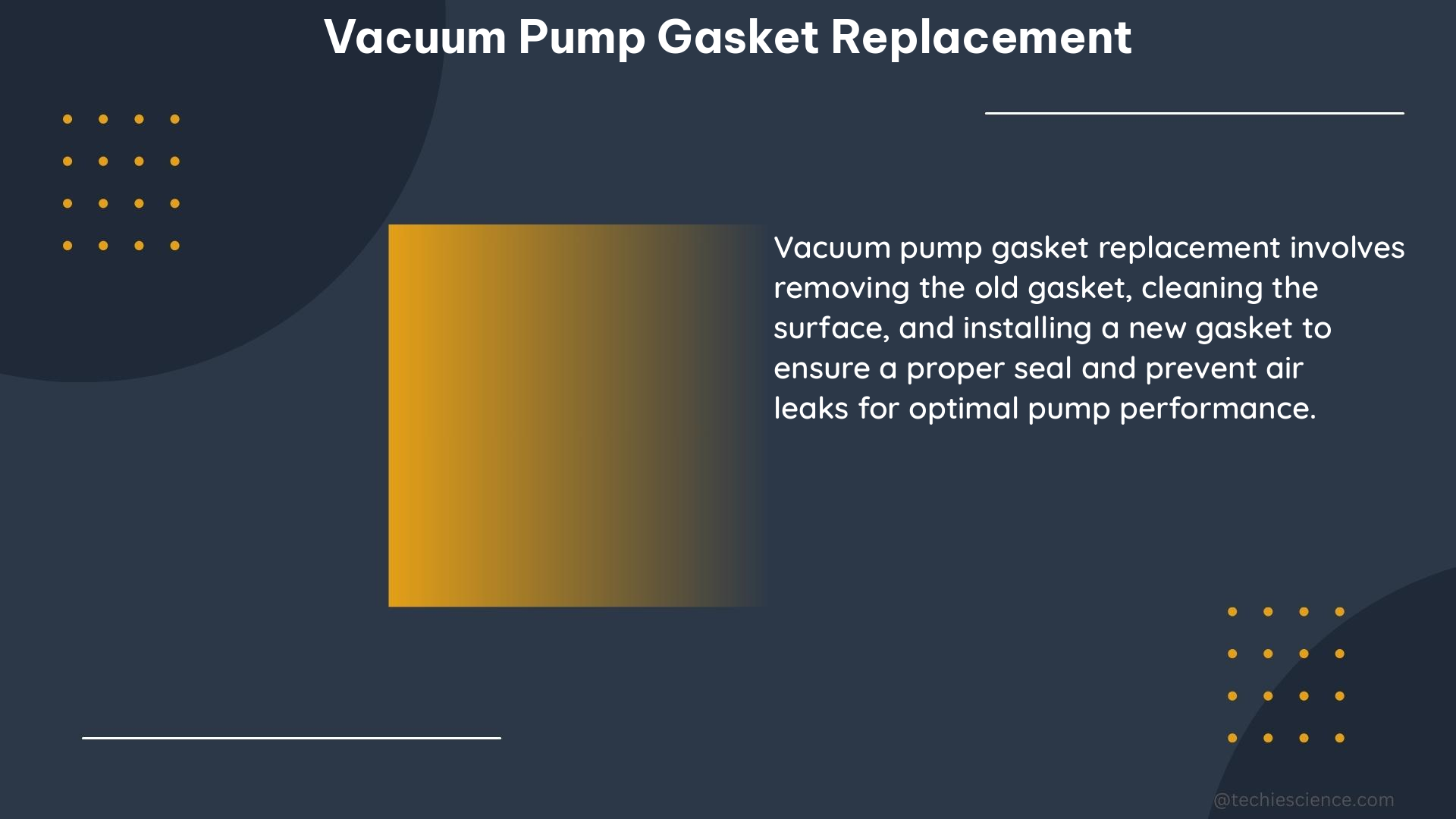Vacuum pump gasket replacement is a critical maintenance task for many vehicles, particularly those with turbocharged or supercharged engines. The gasket ensures a proper seal between the vacuum pump and the engine block, preventing oil leaks and maintaining optimal engine performance. This comprehensive guide will delve into the key aspects of vacuum pump gasket replacement, providing you with the necessary technical details and best practices to ensure a successful and long-lasting repair.
Gasket Thickness Considerations
The thickness of the vacuum pump gasket can vary significantly depending on the specific vehicle make, model, and year. It’s essential to use the correct gasket thickness to maintain the appropriate clearance between the vacuum pump and the engine block. Failing to use the right gasket thickness can lead to improper sealing, resulting in oil leaks and potential damage to the vacuum pump or engine components.
For example, the vacuum pump gasket for a 2014 Ford F-150 with a 3.5L EcoBoost engine typically has a thickness of 1.5 mm, while the gasket for a 2017 Audi A4 with a 2.0L TFSI engine may have a thickness of 2.0 mm. Consult your vehicle’s service manual or the gasket manufacturer’s specifications to ensure you select the correct replacement gasket thickness.
Bolt Torque Specifications

Proper bolt torque is critical for ensuring a secure and leak-free seal between the vacuum pump and the engine block. Adhering to the manufacturer’s specified torque values is crucial to prevent overtightening or undertightening, which could lead to leaks or damage to the vacuum pump.
For instance, the bolt torque for a 2014 Ford F-150 with a 3.5L EcoBoost engine is typically around 89 in-lbs (10 Nm). Using a calibrated torque wrench and following the recommended torque sequence is essential to achieve the proper seal and prevent any potential issues.
| Vehicle Model | Vacuum Pump Gasket Bolt Torque |
|---|---|
| 2014 Ford F-150 3.5L EcoBoost | 89 in-lbs (10 Nm) |
| 2017 Audi A4 2.0L TFSI | 71 in-lbs (8 Nm) |
| 2019 Volkswagen Jetta 1.4T | 62 in-lbs (7 Nm) |
Gasket Material Compatibility
The material composition of the vacuum pump gasket can significantly impact its performance and longevity. Gaskets are typically made from a variety of materials, including composite, rubber, and other elastomeric compounds. It’s essential to select a gasket material that is compatible with the engine oil and can withstand the temperatures and pressures present in the vacuum pump system.
For example, a vacuum pump gasket made of a composite material may be more suitable for a high-performance turbocharged engine, as it can better withstand the increased temperatures and pressures. Conversely, a rubber-based gasket may be more appropriate for a naturally aspirated engine with lower operating temperatures.
Gasket Installation Techniques
Proper gasket installation techniques are crucial for ensuring a leak-free seal between the vacuum pump and the engine block. Depending on the specific gasket design, the use of gasket sealant or adhesive may be required to create a secure bond between the gasket and the mating surfaces.
When applying gasket sealant, it’s important to follow the manufacturer’s recommendations regarding the type and amount of sealant to use. Excessive or improper application of sealant can negatively impact the gasket’s performance and lead to potential leaks.
Additionally, ensuring the mating surfaces are clean and free of any debris or contaminants is essential for a successful gasket installation. Proper alignment and seating of the gasket are also critical steps to prevent any potential leaks.
Vacuum Pump Performance Verification
After replacing the vacuum pump gasket, it’s essential to verify the proper functioning of the vacuum pump. This can be done by checking the vacuum pressure or inspecting the pump for any signs of leaks or damage.
Using a vacuum gauge, you can measure the vacuum pressure generated by the pump and compare it to the manufacturer’s specifications. A significant drop in vacuum pressure or an inability to maintain the required vacuum level may indicate an issue with the gasket seal or the vacuum pump itself.
Additionally, visually inspecting the vacuum pump and the surrounding area for any signs of oil leaks can help ensure the gasket replacement was successful and the system is operating as intended.
Conclusion
Vacuum pump gasket replacement is a critical maintenance task that requires attention to detail and adherence to specific technical specifications. By understanding the importance of gasket thickness, bolt torque, material compatibility, installation techniques, and vacuum pump performance verification, you can ensure a successful and long-lasting repair.
Remember to always consult your vehicle’s service manual or the gasket manufacturer’s recommendations to ensure you are using the correct replacement parts and following the proper procedures. Proper maintenance and attention to these details can help prevent costly repairs and maintain the optimal performance of your vehicle’s vacuum pump system.
References:
- Fiat 500 USA Forum – Still Leaking Oil After Vacuum Pump Gasket Replacement
- F150 EcoBoost.net – Oil Leak on Vacuum Pump, Changed Gasket 3 Times, Still Leaking, Help
- Audizine – Vacuum Pump Gasket Leaking Oil (Small Amount)

The lambdageeks.com Core SME Team is a group of experienced subject matter experts from diverse scientific and technical fields including Physics, Chemistry, Technology,Electronics & Electrical Engineering, Automotive, Mechanical Engineering. Our team collaborates to create high-quality, well-researched articles on a wide range of science and technology topics for the lambdageeks.com website.
All Our Senior SME are having more than 7 Years of experience in the respective fields . They are either Working Industry Professionals or assocaited With different Universities. Refer Our Authors Page to get to know About our Core SMEs.